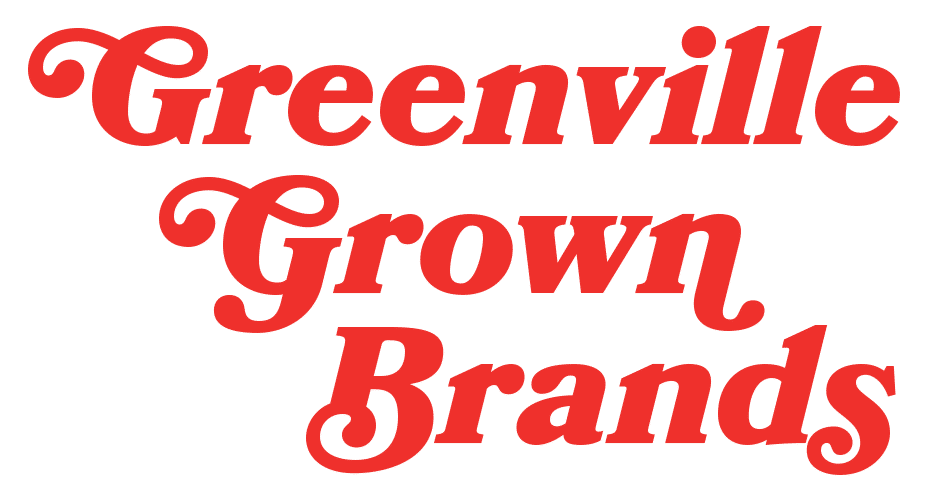The nineties were a crazy time for product experimentation. Particularly for American brands, the era pushed the bounds of experimentation, leading to a portfolio of products that seem entirely bonkers today (remember Surge and purple ketchup?). Interestingly enough, Starbucks hopped the 90s fusion train too, leading to a product you’ve never heard of plus one you’ve probably drunk hundreds of times.
In 1994, the world’s leading coffeehouse joined forces with soda giant Pepsi to roll out a new fizzy drink to its caffeine-loving fans. It was bubbly, served cold, and packaged in small glass bottles — the perfect coffee-soda concoction to captivate the decade’s pop-crazed consumers.
Or so Starbucks thought. Mazagran, named after a sweetened coffee originating in French Algeria, fell flat immediately and was pulled from store shelves within the year.
(Interesting to note: it was the same year Pepsi discontinued its own flavor flop: Crystal Pepsi.) So, what happened? Market research rightfully showed Starbucks customers were looking for a cold coffee drink on-the-go. But deeper digging following the bust revealed consumers wanted a drink that resembled something closer to a milkshake, not a coffee mixed with cola.
The coffee brand took the findings to heart and eventually developed its beloved bottled Frappuccino, a huge hit today and back when it launched in ‘96 — a mere few years before the brand’s iconic mermaid would become a must-have celebrity accessory.
Golden Territory: Put your stake in the ground with market research
As a marketing leader, it’s essential to take a walk in customers’ shoes. Understanding your ideal customer profile’s needs — and wants — removes the guesswork from developing effective marketing strategies. To prevent brand failures or product launches that drop with a thud, it’s crucial to conduct strategic market research.
There are a variety of techniques you can employ to pull off market research, but generally, it involves gathering as much data as you can about your customers, their preferences, and the market to empower business decisions.
But data can only take you so far. It’s also key to go straight to the source and gauge your customers’ experience. You should ask customers questions, spend time observing how they use your product or service, and gather feedback about your brand. After all, making free-falling assumptions can lead to missed market opportunities, or worse, damage your business.
“Data is really good for discovery and validation, but there is a bit in the middle where you have to go and find the human.”
- Kristina Wagner
All of this helps you put your stake in the ground. By analyzing the current state of the market, you harness the power to spot trends, size up the competition, identify risks, seize opportunities, and gain valuable insights into your audience’s pain points and challenges.
This process allows you to discover your sweet spot in the market — a.k.a. your Golden Territory — to meet the demand of your potential brand loyalists. In fact, research by Deloitte has shown that embracing a customer-centric approach to marketing, rather than taking a brand- or product-led one, leads businesses to become 60% more profitable.
So, want to turn your customers’ insights to gold? Let’s explore how to leverage market research to take your customers’ greatest challenges and turn them into grand opportunities, delivering irresistible value they can’t refuse.
Size up the competition
To determine your Golden Territory of product opportunity, it’s critical to understand the competitors your brand is up against. In today’s environment, customers have more choices than ever before, so evaluating rivals is not only a smart play, it can provide you with the leverage to pull ahead and seize your full market potential.
By conducting a thorough competitive analysis, you can identify key competitors and analyze their strengths, weaknesses, differentiators, and marketing strategies to determine what’s working and not working in your industry.
Consider the retail grocery industry, for example. In the 1980s, as fast-food chains, TV dinners, and highly-processed snacks like Doritos and Pop-Tarts were popping off, a group of businesspeople saw a growing need for a brand to provide the exact opposite: a natural foods supermarket. In 1980, Whole Foods was born, tapping into health-conscious Americans searching for real food.
While the brand quickly expanded its footprint and ultimately became super successful, it was also deemed pretty expensive — with some customers nicknaming the grocer “Whole Paycheck.” Spotting a window of opportunity, a small, but growing grocery chain named Trader Joe’s stepped in with similar high-quality organic food options, but at a much cheaper price, mostly by investing in private-label products.
Trader Joe’s used market research to find a viable path to seize a new market and crush the competition. By the early 2010s, Trader Joe’s was selling nearly twice as much as Whole Foods in the fresh format space, a trend that continues on today.
It just goes to show why conducting competitive analysis is so necessary. In fact, companies that frequently conduct market research are more likely to improve customer retention, enter a new market, or launch a new product or service than their peers who leave research on the back burner.
To conduct effective competitive analysis for your own business, take these steps:
Identify key competitors: Make a list of your leading brand rivals and research their products, services, and marketing tactics. You’ll want to consider direct competitors, indirect competitors, and brands looking to disrupt your space.
For example, in the traditional healthcare industry, all eyes are on Amazon after the ecommerce giant stepped in to offer healthcare services to its massive customer base, at a much lower cost. Hospitals are now looking to leverage personalized patient engagement to combat the threat (and get ahead of the brand that is better known for delivering customers’ monthly supply of toilet paper.)
Analyze marketing tactics: In today’s digital world, it’s easy to take the pulse of a competitor’s marketing strategy. In addition to reviewing company websites, social media profiles, and marketing messaging, tools such as SEMRush can take you inside a brand’s organic and paid media ploys. Scrutinizing these areas can help you pinpoint your competitor’s unique selling points, providing a great opportunity to play counter-offensive.
Track rival performance: Want to know how customers really feel about your competitor’s brand? Take a deep dive into their online reviews.
Uncovering customer sentiment and feedback can help you see how the brand is performing and allow you to identify areas to best the competition. You should also monitor competitors’ sales, market share (divide total sales or revenue by industry totals over a fiscal period), and other measurements such as website traffic to determine brand perceptions and health.
Examine the market landscape
In addition to analyzing your competitors, it’s essential to get a lay of the land and understand the current state of the market. By identifying market trends, risks, and opportunities, you can make informed decisions about your marketing strategies and stay ahead of the curve.
Having market research can also keep your brand agile and help you establish your Golden Territory.
This was especially visible during the downturn of the pandemic. With industries zig-zagging on a near-daily basis due to stay-at-home orders and supply chain log jams, unprecedented market conditions created (and spit out) plenty of winners and losers. Streaming services and online productivity tools such as Zoom seized the opportunity leading them to boom, while many slow-to-adapt brands crashed and burned.
A few tools and resources you can use for market research include:
Industry reports and publications: At FUEL, we love a good whitepaper. Gathering industry reports and publications allows you to gain insights into the latest market trends, technologies, and best practices that you can apply to your own business. These reports also provide a treasure trove of data, generating plenty of opportunities for you to demonstrate evidence for a new product buy-in or brand direction.
Social media listening: Sometimes it’s best to hear feedback directly from customers’ mouths. While social media often promotes the squeakiest wheel, for better or for worse, monitoring social media platforms, such as LinkedIn, Twitter (ahem, “X”), Facebook, and Instagram, is an easy way to see what people are saying about your brand, your rivals, and your industry. Reviewing popular forums such as Reddit and Quora can also surface valuable insights.
Keyword research: There are plenty of tools to conduct keyword research these days, including Google Keyword Planner, SEMRush, and AnswerThePublic, but this approach goes way beyond generating a long list of popular search terms. You’ll also want to identify User Intent to make the most of your SEO research. User intent gets to the root of users’ goals when they’re entering search queries; you can even include user intent to build out your marketing funnel.
For example, a user might search for “pizza,” indicating that they’re looking for a pizza place to eat. But if they search for “how to make a pizza,” they’re likely looking for a recipe. Knowing how to show up in the search results is more important than having specific words stuffed inside your ads or website (it’s all about conversions, people!).
Pinpoint customers’ needs
Once you’ve taken a magnifying glass to the market and conducted a competitive analysis, it’s time to unearth the needs and pain points of your target audience. Knowing your customers deeply is crucial to crafting a compelling value proposition, maximizing an emotional connection, and creating a product or solution that effectively meets their needs.
At least 66% of customers expect brands to understand their needs and expectations. When customers feel understood they are more likely to resonate with your messaging, drive desired behaviors (such as increased spending), and share their positive experiences with others.
And when a brand fails to meet the bar — well, they’re even more likely to make their grudges known to the public.
And things can get pretty contemptuous. Hello, X. Since Elon Musk purchased the iconic blue bird and turned the social platform into his personal pet, fans have been in an uproar. Implementing shocking changes to the business – including paid verification, rule changes, and banning links to other social apps — turned off advertisers and led to mass exodus of with his controversial antics.
All they wanted was to scroll their newsfeeds for breaking news and entertainment, enjoy the discourse, and own a seat in the “global town square.” Instead, the brand was hastily rebranded to “X” with a hair-raising goal of becoming an “everything app.” Whatever that means.
Cue the thousands of angry, confused tweets (and yes, we’re still calling them “tweets” and so is X, for now.) This is why Mark Zuck was able to rush in and launch his rival platform, Threads … except that people don’t really want the hassle of logging into yet another social media platform.
The point is Twitter fans didn’t ask for any of this, and Elon Musk hasn’t considered their needs in his grand vision for X. He hasn’t gotten to know his customers.
To avoid similar backlash, you’ll want to avoid Elon’s approach and identify your ideal customer. Then you’ll want to do the digging necessary to uncover customers’ real needs, so you can deliver them the most value.
A few techniques to identify and meet your customers’ needs include:
- Surveys: Tools such as SurveyMonkey can enable you to conduct satisfaction surveys and gather feedback from customers, revealing areas for improvement or new market opportunities.
- Customer feedback: Online reviews, social media comments, and customer support interactions are great places to uncover customer sentiment and tackle any issues fast.
- Social listening: This is something Elon Musk should probably do more often. Monitoring social media platforms and online communities with social listening tools allows you to hear directly from the people discussing your industry and brand.
With increased emphasis on experience-led growth and personalization, knowing your customers is more important than ever before. It can mean the difference between finding brand ambassadors or dodging disgruntled customers who move on from your business for a rival.
Understanding your audience and conducting market research is key to standing out from the crowd. By conducting competitive analysis, analyzing the market, identifying customer needs, and developing solutions specific to their problems, you can deliver true value to your customers — and build a strong brand reputation in the process.
If you need a lift with your market research initiatives, tap into the brand-building expertise at FUEL. We’re happy to share more about our approach to brand strategy and how we can help you reach your specific goals. Reach out today.








